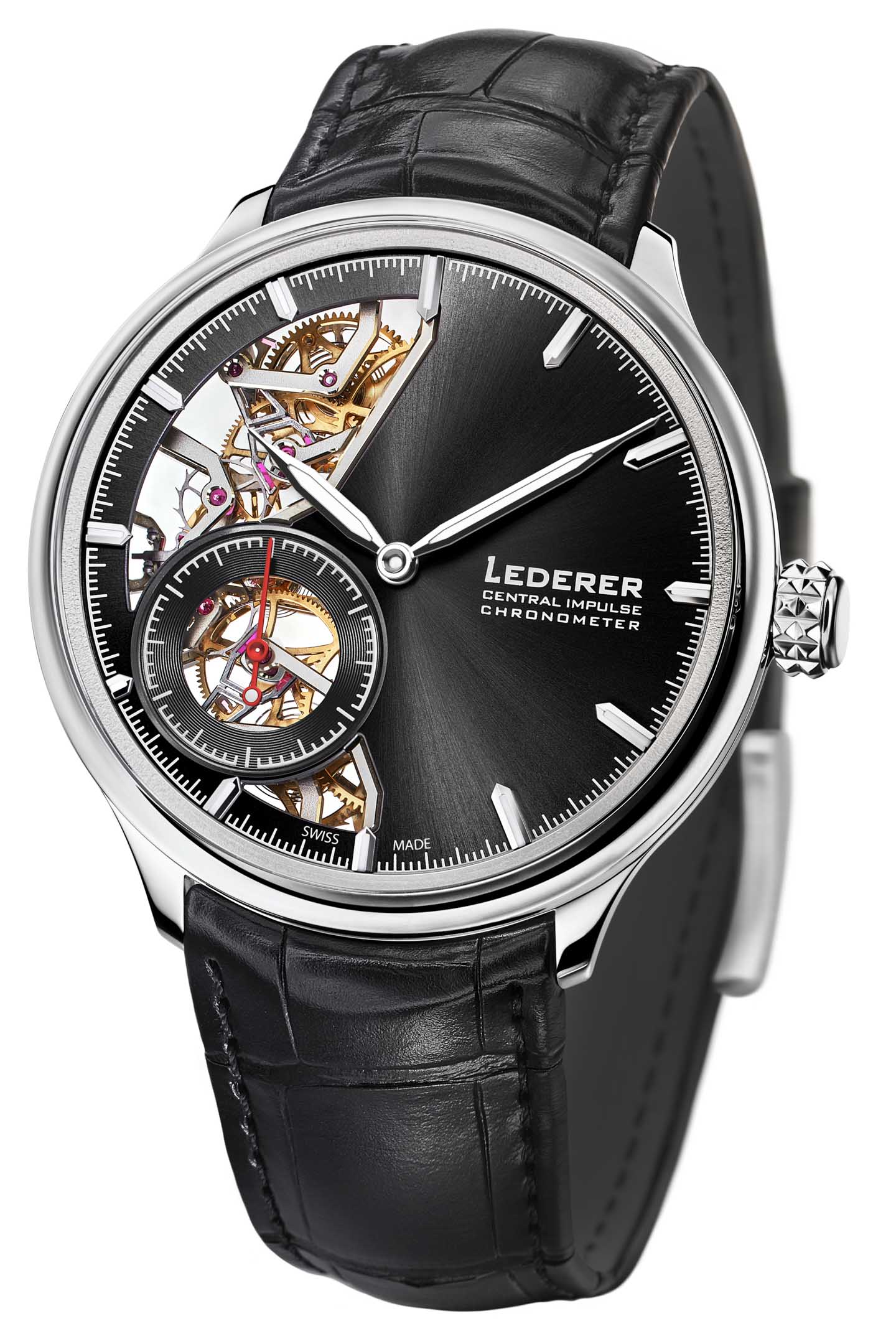
While not a household name, Bernhard Lederer is among today’s greatest living independent watchmakers and was first introduced to me at his really cool watch former brand, Blu. Now, toward the latter part of 2020, Bernhard Lederer is back with a new eponymous watch that continues a legacy of research and development in timepiece precision that began over 200 years ago. The Bernhard Lederer Central Impulse Chronometer helps us all recall why we started to fall in love with fine watchmaking in the first place and is a rare true treat of horology to be released this year.
Watchmakers Breguet and, more recently, George Daniels both obsessed over the idea of how to make mechanical watches more accurate by reducing areas in a watch movement where power is lost and where rate results errors can occur. It has long been known that the means by which an oscillating balance wheel connects with the gear train of a mechanical timepiece is where a lot of problems can occur. This is why most watchmaking innovation usually involves some part of this system. Over time, numerous variations on the now-standard balance-wheel and Swiss lever escapement regular system have been developed. Some actually work better. The common setup is preferred because of its particular mixture of performance, resistance to shock and vibration, and cost-effectiveness to produce and assemble. Some of those factors become less important in a high-luxury watch where technique and sophistication trump efficiency.
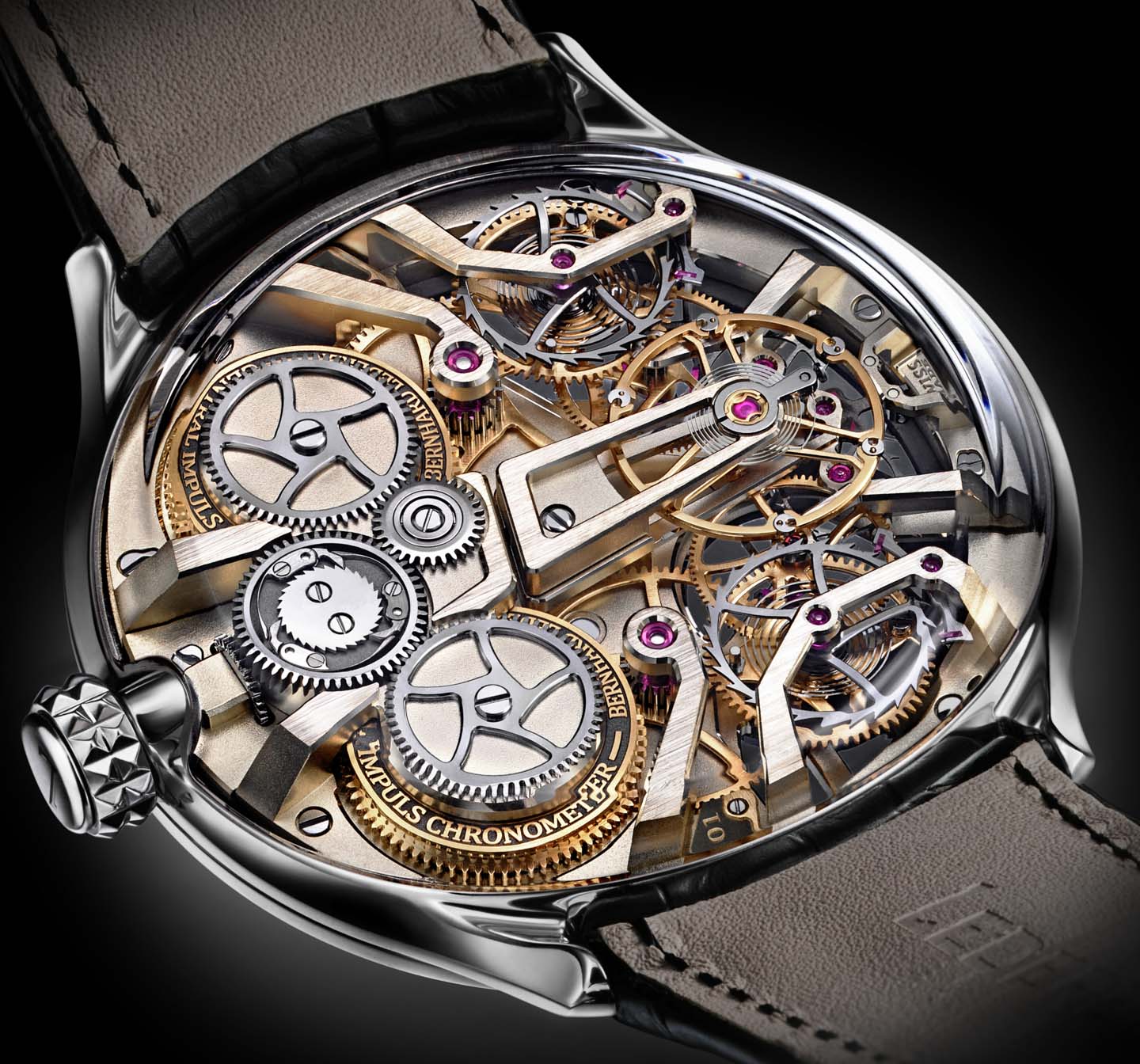
The Central Impulse Chronometer watch can be best understood as Bernhard wanting to flex a bit, producing his particular interpretation of a supercar for the wrist and building on the legacy created by George Daniels in pocket watches like Space Traveller series (of two watches). Richard Mille as a mega luxury watch maker does this one way, and Mr. Lederer, along with other members of the AHCI, are more about pizazz in the movement itself. One of the most telling things about the Central Impulse Chronometer watch is a detail almost hidden in the brand’s release about the watch. They remark how the movement is very quiet, not ticking loudly but rather purring softly as the dual escapements and remontoires operate in tandem. Why is this a big deal? That’s a bit hard to explain. Think of it this way: Loud sounds from parts hitting against each other in a watch movement mean a lot of energy is wasted and that there is probably way too much error. Pieces that more elegantly connect with each other in a movement are wasting less power as the energy is transferred. This has an appreciable effect on performance. Thus, a loudly ticking movement is one in which a lot of power is being wasted, and one that is quiet is probably a lot more efficient with power. Very, and I mean very nerdy watch lovers will appreciate this fact — and the fact that Bernhard Lederer also cares about this is a testament to the kinds of values he has in his practice as an independent watchmaker.
At the heart of his caliber 9012 in-house-designed and -made movement is a new regulation system that begins with a central impulse escapement. This is one of a few systems that, taken together, allow for the watch to be as precise as possible (though like most luxury watches at this level, an actual level of performance outside of it achieving a chronometer rating is not disclosed). This special type of escapement does away with the Swiss lever and connects the anchors more directly to the balance wheel. In the caliber 9012 manually wound movement, there are two of these “natural escapement with central impulses” systems, which flow to their own independent gear trains. Each is also connected to a constant force system — in particular, a remontoire, which is a system that stores up and then emits a very consistent level of energy so that the timepiece’s rate results performance is as good as possible.

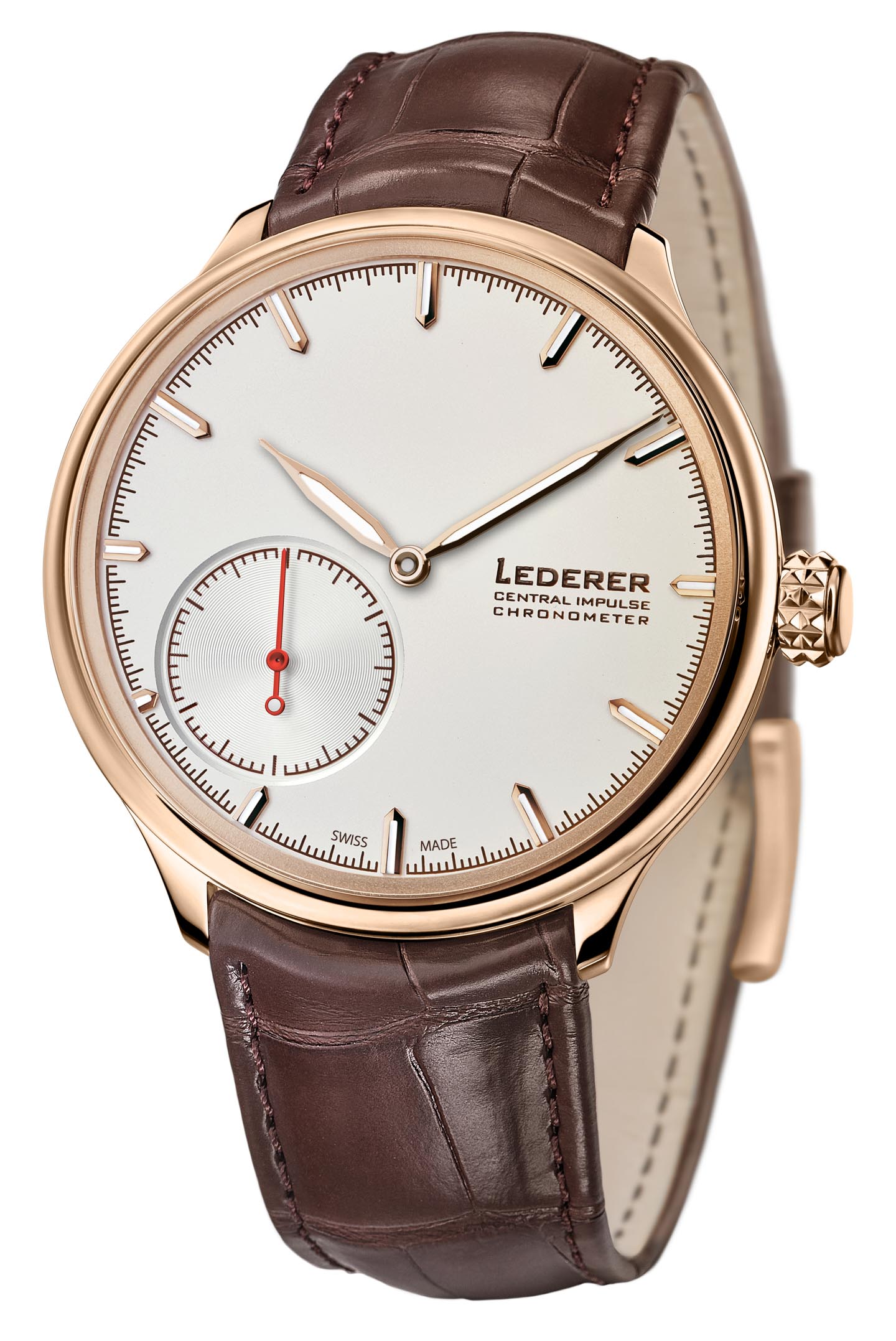
Also interesting is the question of why the movement has dual gear trains feeding off of the same balance wheel. In some watches, the dual systems have their rate results averaged out with a differential. That doesn’t seem to be happening in the Central Impulse Chronometer. Rather, what I believe is going on is that one gear train powers the running seconds (in the subsidiary dial), and other powers the motion of the hour and minute hands. That is not a novel approach, per se, but rare and interesting in its execution. From a watchmaker’s perspective, the flexing here is palpable. This would be like Bernhard Lederer showing off his jet with two engines that each have extra turbos on them. And then he goes and polishes up the entire assembly.
Mr. Lederer’s love of the caliber 9012 is evident in how nicely its architecture was designed. The aesthetic is quite contemporary, but it uses only traditional decoration and manufacturing techniques. The movement operates at 3Hz and has a power reserve of 38 hours between two mainspring barrels. This is a very power-hungry movement and is actually relatively efficient, being comprised of just 208 parts. The real appeal, in addition to the fascinating approach to the central impulse escapement system along with the double constant force gear train, is merely how the movement looks and is actually presented in the watch.
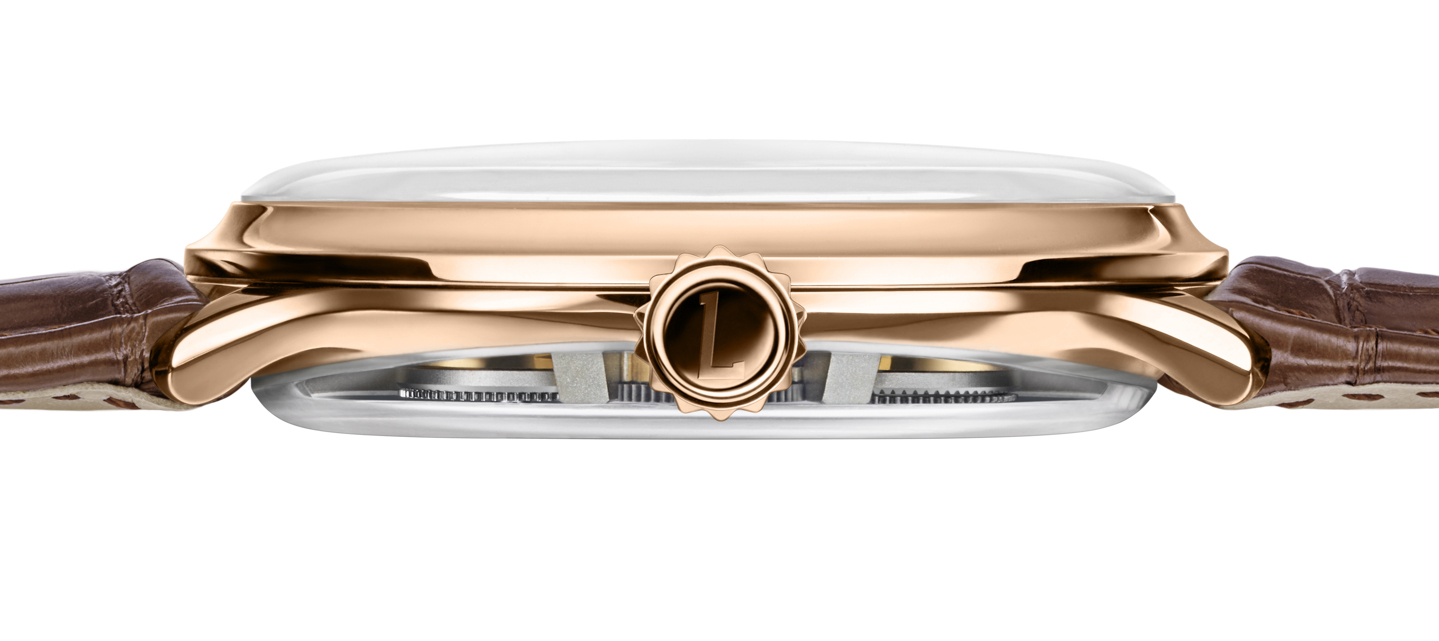
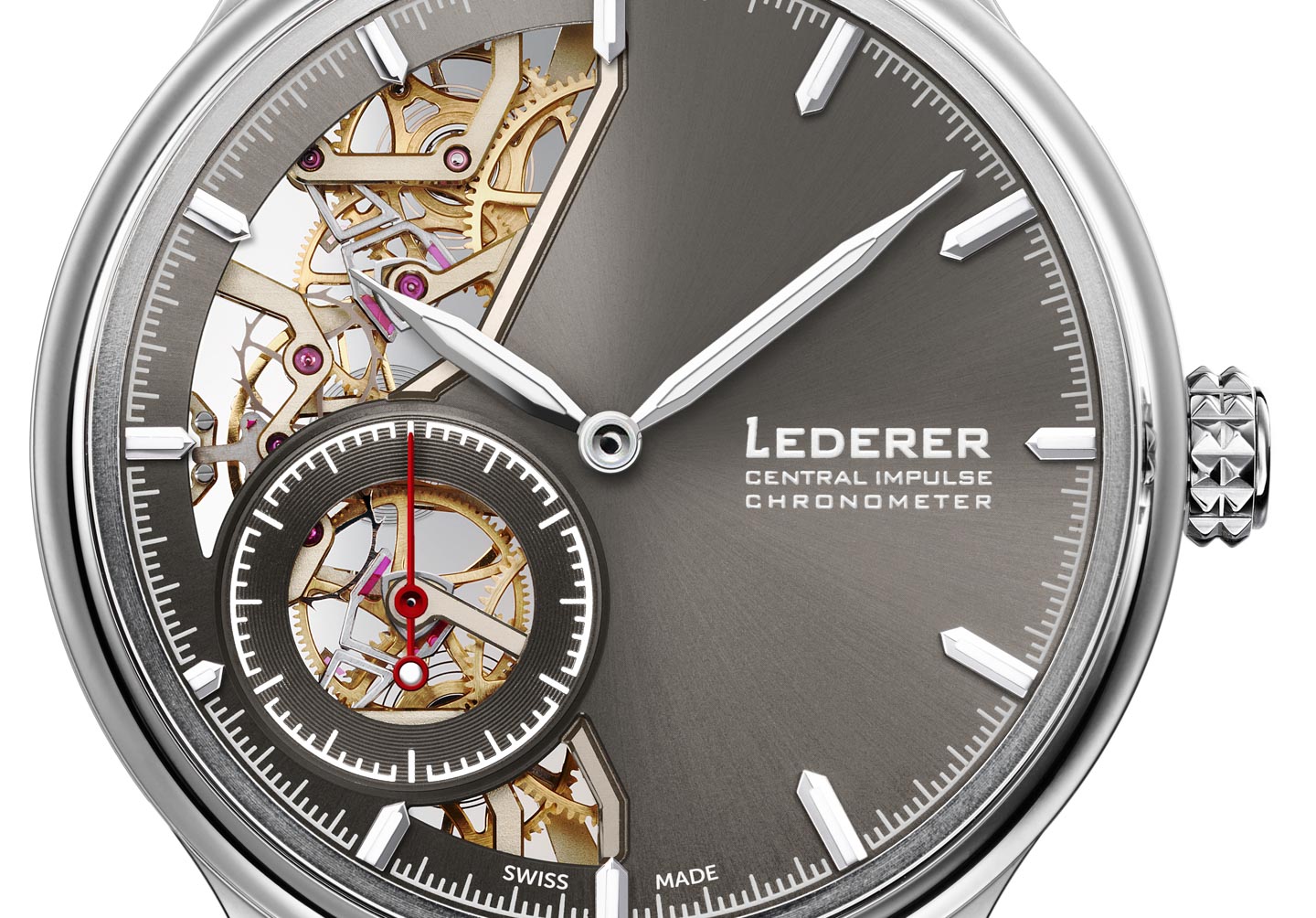
A box-style sapphire crystal caps the rear of the Central Impulse Chronometer’s 44mm-wide case (water-resistant to 30 meters). It offers a beautifully expansive view of the movement. Two versions of the dial are available — with or without partial skeletonization to admire more of the animated mechanics. Even though the case is just 12.2mm-thick, it is made visually thinner by the presence of the transparent caseback and visually thin metal case component.
Version 1 of the Bernhard Lederer Central Impulse Chronometer will be available in 18k rose gold, and Version 2 is available in white gold. Black or brown alligators straps are available. The watches are likely produced one a time with just a few of them in production each year. Serious aficionados will be immediately drawn to this work. The classic theme of the watch is related to the historic efforts watchmakers have been engaged with since the beginning of watchmaking to increase accuracy in movements. And then lots of little touches, such as the design of the hands on the dial to the shapes of the caliber 9012 movement’s bridges, firmly place the watch “in the now.”
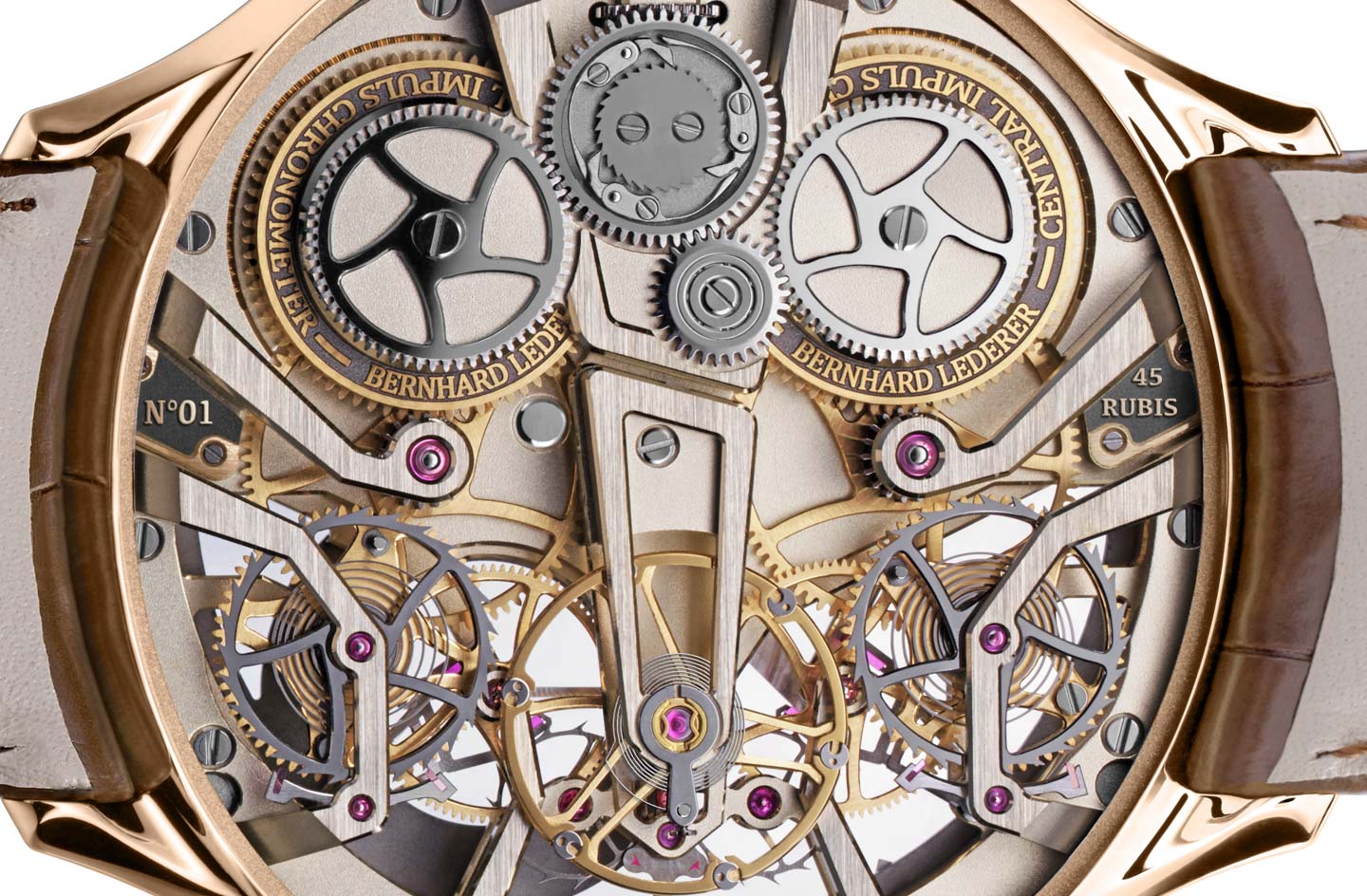
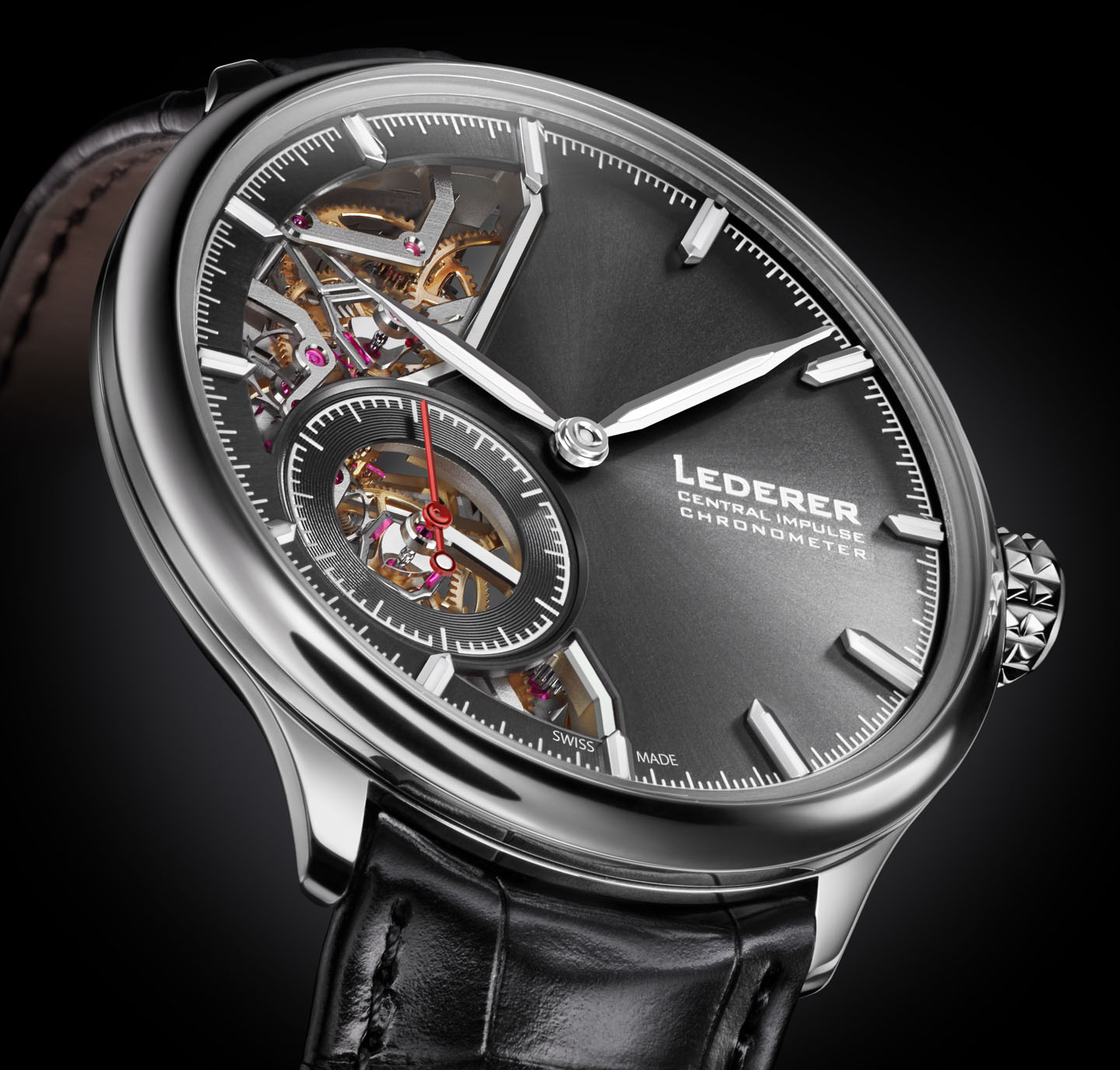
While not the only watch at this price level to debut this year, the Bernhard Lederer Central Impulse Chronometer is among the rare “honest” ones that are less about luxurious displays of money and more about the enthusiastic pursuit of timepiece excellence and pushing the boundaries of micro-mechanical engineering. I’m pretty sure that Mr. Breguet and Mr. Daniels would be proud. Price for the Bernhard Lederer Central Impulse Chronometer watch is 128,000 CHF. Learn more at the Bernhard Lederer website here.















